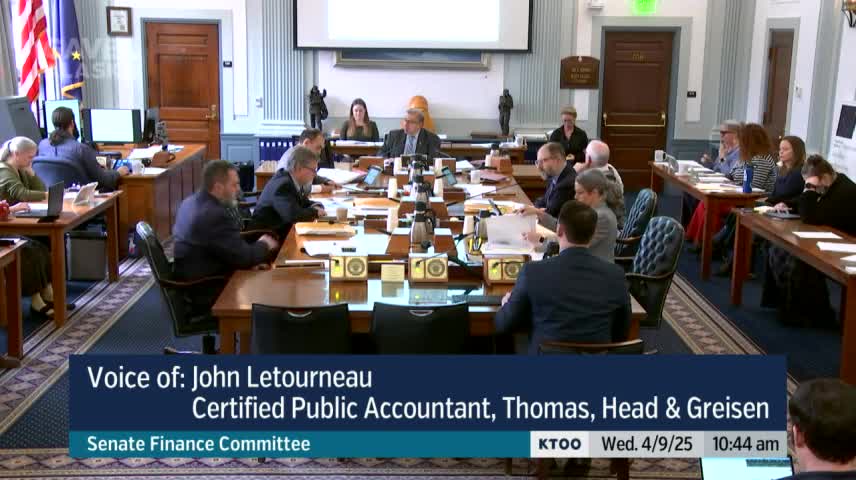Analysis reveals tax disparities for C corps and S corps under Alaska law
April 09, 2025 | 2025 Legislature Alaska, Alaska
This article was created by AI summarizing key points discussed. AI makes mistakes, so for full details and context, please refer to the video of the full meeting. Please report any errors so we can fix them. Report an error »

During a recent Senate Finance meeting, a significant discussion emerged regarding the tax implications for corporations in Alaska, particularly focusing on the differences between C corporations and S corporations. The meeting highlighted a hypothetical scenario involving two companies with identical pre-tax incomes of $1 billion, illustrating the stark contrast in tax liabilities under current Alaska statutes.
According to the presentation, a C corporation would owe nearly $94 million in state income taxes, while an S corporation, despite earning the same amount, would pay nothing. This disparity raises important questions about the fairness and effectiveness of Alaska's corporate tax structure.
The discussion emphasized that C corporations are taxed at the corporate level, while S corporations, classified as flow-through entities, do not incur state taxes. This distinction has significant implications for business operations and tax revenue in Alaska.
As lawmakers consider these findings, the potential for reform in corporate taxation could be on the horizon, aiming to address the inequities highlighted in the meeting. The outcome of these discussions may shape the future landscape of business taxation in the state, impacting both revenue generation and corporate behavior.
According to the presentation, a C corporation would owe nearly $94 million in state income taxes, while an S corporation, despite earning the same amount, would pay nothing. This disparity raises important questions about the fairness and effectiveness of Alaska's corporate tax structure.
The discussion emphasized that C corporations are taxed at the corporate level, while S corporations, classified as flow-through entities, do not incur state taxes. This distinction has significant implications for business operations and tax revenue in Alaska.
As lawmakers consider these findings, the potential for reform in corporate taxation could be on the horizon, aiming to address the inequities highlighted in the meeting. The outcome of these discussions may shape the future landscape of business taxation in the state, impacting both revenue generation and corporate behavior.
View full meeting
This article is based on a recent meeting—watch the full video and explore the complete transcript for deeper insights into the discussion.
View full meeting
